Armenia must adhere to a multi-vector foreign policy while effectively managing risks, as Prime Minister Nikol Pashinyan stated two years ago during a lecture in the Netherlands. But that includes the necessity of trading with Russia despite the extreme sanctions imposed only days after the war in Ukraine started two years ago, for the sake of keeping the economy afloat.
In April this year, Yerevan again stated the need for diversification, stressing that this strategy has become not just theoretical but a reality for the country. Pashinyan has repeatedly claimed that Armenia follows a consistent multi-vector foreign economic policy. However, upon deeper analysis, it becomes clear that the proclaimed multi-vector approach does not reflect the actual situation. Yerevan’s real policy resembles a forced choice between the interests of major players rather than a fully balanced multi-vector strategy implying equal relations with various partners.
Today, Armenia is slowly but steadily moving toward the West while simultaneously benefiting significantly from trade with Russia. Despite Yerevan’s official statements, relations with Moscow are not as strained as they may appear at first glance. This is evident from Armenia’s economic indicators, which are growing due to the re-export of Russian products that have come under sanctions.
Since the start of the Russia-Ukraine war in 2022, Armenia, the country with the smallest foreign trade volume in the South Caucasus, has faced a sharp increase in both imports and exports, a surge that seems disproportionate to its economic potential. The expansion of sanctions imposed by the European Union and the US against Russia has led to reports indicating a significant rise in trade between Armenia and Russia.
Changes in the structure of goods flows and trade destinations between 2021 and 2023 are largely linked to circumventing Western sanctions against Russia. In 2021, Armenia’s foreign trade turnover with Russia increased by 24.2% compared to 2020, reaching $2.6bn. In 2022, it skyrocketed by 93.4%, amounting to $5bn, and in 2023, the growth continued at 45.7%, with turnover reaching $7.3bn. According to Alexey Overchuk, the First Deputy Chairman of the Russian Government, at an intergovernmental commission meeting on economic cooperation with Armenia, trade turnover between the two countries could reach $14-16bn in 2024. Should this forecast materialise, Armenia’s foreign trade volume with Russia would increase eightfold compared to 2020.
According to Armenia’s National Statistical Committee, exports to Russia in 2022 tripled compared to the previous year, reaching $2.4bn. In 2023, this figure rose by 43.1%, hitting a historical high of $3.4bn. Between 2010 and 2020, the average annual growth rate of Armenian exports to Russia was 18.6%, while from 2020 to 2023, this rate sharply increased to 64%.
Russia’s share in Armenia’s total exports, which stood at 27% in 2021, increased to 40-44% in 2022-2023. This growth can be attributed to Armenia’s strategy of circumventing sanctions – the country imports goods from the European Union, the Gulf and Asia, followed by re-exporting them to Russia. In 2023, 14.7% ($499mn) of Armenia’s exports to Russia consisted of telecommunications devices, 11.1% ($378mn) were passenger cars, 7.39% ($250mn) were monitors and projectors, 2.54% ($86mn) were calculators and their parts, and 1% ($31mn) were vacuum cleaners. In total, 91% of Armenia’s electromechanical equipment exports are directed to Russia. Additionally, exports of nuclear reactors and mechanical devices to Russia increased tenfold, and exports of optical instruments and medical equipment grew fivefold. Exports of aircraft doubled, while exports of ships and boats increased eighteenfold, musical instruments thirty-eightfold, and works of art and collectibles 19-fold. Many of these products had never previously been exported to Russia.
Despite the EU’s sanctions against Russia, some EU countries continue to trade with Russia through Armenia. Notably, Armenia’s trade turnover with the EU increased 2.4 times in 2023 compared to 2021, especially with countries such as Greece and Cyprus, where Armenian exports surged 39 and 24 times, respectively. This raises questions about the consistency of EU and US policies on sanctions against Russia when the very countries imposing these restrictions engage in trade through Armenia, effectively providing Russia with a “trade lifeline”, thereby indirectly supporting its actions in Ukraine.
At a press conference following the Antalya Diplomatic Forum on March 2, Russian Foreign Minister Sergey Lavrov stated that Yerevan had made a “deliberate decision” to pursue a course of deteriorating relations with Moscow. “We regret that the Armenian leadership has apparently made a conscious decision to consistently worsen relations with the Russian Federation, blaming Russia for everything that has happened with Nagorno-Karabakh. This is certainly not the behaviour of an ally. The Armenian leadership has decided to bet on extra-regional countries, which are courting Yerevan and promising to help with all its problems, as long as Armenia ‘cuts ties’ with Russia and the integration structures created in our shared region. It takes political courage to admit that since 1991, Armenia has followed a fundamentally wrong course in relations with Russia. If this is the assessment of the entire Armenian leadership, based on the opinion of the people, then much in the Russia-Armenia relationship needs to be reconsidered,” Lavrov said.
Despite growing political tensions, economic cooperation between the two countries remains stable. While Lavrov’s statements were harsh, economic ties between Russia and Armenia not only persist but also show significant growth. The worse the external relations between Moscow and Yerevan, the greater the trade turnover.
In early June, Germany’s DW conducted an investigation and published its findings. It is known that, since January this year, in line with the 12th package of EU sanctions, a full ban on the direct import of non-industrial natural and synthetic diamonds and diamond jewellery from Russia to the EU came into effect. A partial European embargo on Russian diamonds processed in third countries was introduced on March 1, with the full ban taking effect on September 1. As DW reports, gold is exported from Armenia under the guise of Armenian origin, although the country has never produced this metal in such quantities. In 2023, according to official statistics, Armenia exported $1.8bn worth of gold and $589mn worth of diamonds. Since the beginning of 2024, Armenia has already exported $2.5bn worth of gold and nearly $200mn worth of diamonds. The processing of precious raw materials has increased by 31%.
Armenia serves as a transit point not only for the re-export of Russian products but also for the re-export of European goods to Russia. According to Armenian media, since 2022, Armenia has been supplying the Russian Federation with mobile phones, household appliances, and vehicles of European, US and other origin. Armenia itself does not produce these goods.
Nikol Pashinyan’s proclaimed “multi-vector” approach is not limited to the re-export of sanctioned Russian goods to other countries and the transshipment of European goods to Russia. Yerevan is also diversifying its arms purchases. After harsh statements from the Armenian side toward Moscow, the expulsion of Russian border guards from Zvartnots Airport, and Russia’s acute need for weapons, it was expected that arms deals between the two countries would be halted once and for all.
However, it was recently revealed that Russia has resumed arms supplies to Armenia under previously concluded contracts. Specifically, this concerns the supply of rockets for the Smerch multiple-launch rocket system. A year ago, Russian media reported that the rocket manufacturer NPO Splav had approached Yerevan about the readiness of an order for shipment, but the Armenian side did not collect the rockets. It was also reported that after the 2020 war Russia offered and was ready to supply Armenia with weapons and ammunition on credit for amounts of $1bn and $400mn. The smaller contract was approved and ready for signing, and only days remained before the approval of the $1bn contract when Armenia abruptly rejected the agreements. Instead, Iran and Armenia have signed a major arms deal worth $500mn. Additionally, Armenia has become the largest buyer of Indian weapons. As reported by Report, citing data from the Indian agency IADN and the Ministry of Defence, the total amount of arms purchases by Armenia will reach $600mn in the 2024-2025 fiscal years. Since 2021, Armenia has been actively acquiring missiles, artillery systems, air defence systems and other weapons from India.
India, according to official data and various sources, is actively strengthening military-technical cooperation with Armenia. Between 2023 and 2024, Yerevan purchased a wide range of weapons from India, including advanced missile systems, air defence systems, tanks, armoured vehicles, howitzers, small arms, and unmanned aerial vehicles. These supplies significantly bolster Armenia’s defence capabilities amid the unstable geopolitical situation in the region. In addition to cooperation with India, Armenia is also actively purchasing weapons from France, indicating an expansion in the geography of military supplies and a desire to diversify arms sources. Moreover, Azerbaijani media reported on the potential supply of American military equipment.
It is noteworthy that Armenia’s arms purchases from Nato countries, including France and the US, have not become an obstacle to receiving Russian missiles, indicating the continued strong ties with Moscow in the military sphere. The question remains whether Armenia will return to previously suspended contracts with Russia given the changing political and economic situation.
Opinion
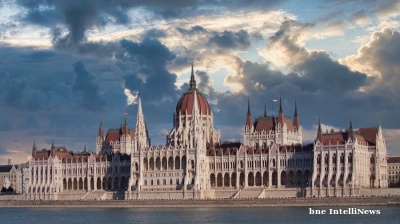
COMMENT: Hungary’s investment slump shows signs of bottoming, but EU tensions still cast a long shadow
Hungary’s economy has fallen behind its Central European peers in recent years, and the root of this underperformance lies in a sharp and protracted collapse in investment. But a possible change of government next year could change things.
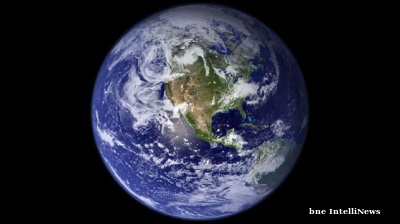
IMF: Global economic outlook shows modest change amid policy shifts and complex forces
Dialing down uncertainty, reducing vulnerabilities, and investing in innovation can help deliver durable economic gains.
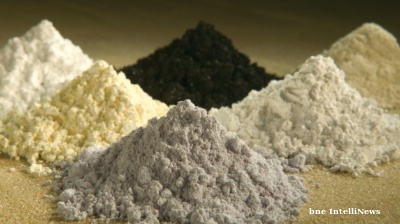
COMMENT: China’s new export controls are narrower than first appears
A closer inspection suggests that the scope of China’s new controls on rare earths is narrower than many had initially feared. But they still give officials plenty of leverage over global supply chains, according to Capital Economics.
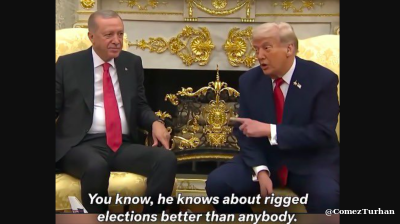
BEYOND THE BOSPORUS: Consumed by the Donald Trump Gaza Show? You’d do well to remember the Erdogan Episode
Nature of Turkey-US relations has become transparent under an American president who doesn’t deign to care what people think.
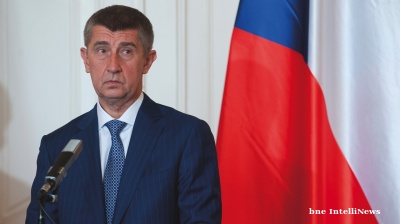
_Cropped_9.jpg)


